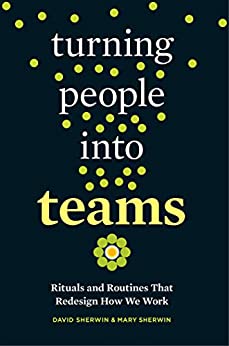The Remote Asynchronous Work mindset
By Jeremiah Lee • May 2021
Remote work is not about not being in the same space. That is defining the new experience in terms of the old experience.
Remote work is better described as asynchronous work, a method for creating business value without a real-time dependency on another person. Asynchronous work replaces most meetings with structured written communication and defined collaboration practices. However, this replacement comes with a cost.
- Leadership must increase intentionality about how the company should operate. Smart organizational defaults must be created, communicated, and maintained.
- The overhead of collaboration shifts from meetings to supporting practices. Teams must think about how they can enable their collaborators and stakeholders to be self-reliant. New teams dedicated to human infrastructure may be required.
- Leadership must embrace a co-ownership culture. Individuals will need to be encouraged and supported in having a bias for action over asking for permission. Managers will need to prioritize attaining alignment, setting expectations, and following up.
Smart organizational defaults
Becoming productive within any company involves learning how to fill in these blanks: “We do [task] with [tool] to get [objective] done.” Remote workers, by definition, cannot look around the office and infer how they should work by observing their co-workers. They need some other way to obtain that knowledge.
A smart organizational default is an explicit norm for how to operate within the company. It will not handle every exception, but it is a thoughtful and efficient start.
Some examples:
- Instead of verbally asking our manager about taking vacation, we put time-off requests in Workday. Workday will notify our manager and our manager can approve or reach out to us if necessary.
- Instead of attending a status meeting, we post weekly updates in our team’s Confluence space to communicate our progress and subscribe to other teams’ space updates to be informed of their progress. (Confluence is like a wiki and blog.)
- Instead of asking a team when the work we rely on will be completed, all teams define and track their work in a common way in Jira so we can see the work’s status ourselves.
- Instead of attending a design review meeting, we share designs using InVision to get feedback from stakeholders.
- Instead of having multiple group discussions to make a decision as a team, we write a DACI decision-making document with the relevant people to articulate options, discuss, and decide.
Having explicitly defined practices might seem like a bunch of overhead at first. In use, they should feel like lightweight, intuitable ways of working that enable you to do your best work mostly on your schedule.
When they are working well, you have the right permissions to the tools you need to get your job done. Teams you rely on have created ways for you to help yourself and not block you. You know what you should be doing next. You know how and when to engage with people. You are able to make progress on your own primary value contributions until you need feedback.
Human infrastructure
Self-sufficiency is an illusion made possible by a support system often invisible to the individual. Asynchronous collaboration requires investing in human infrastructure: the tools, processes, and teams that enable people to self-serve their way to success.
Merely declaring an asynchronous practice does not make it reality. Some will require building or adopting a tool. Then, the practice must be discoverable, taught, supported, and evaluated regularly to become a smart organizational default.
This will be a new responsibility for some teams. For others, it will be an adaptation. New roles and teams may need to be added to support this work. For the same reasons executives need executive assistants, the rest of the company needs help facilitating their collaboration.
The ancient Greeks believed the gods helped those who helped themselves, but gods are notably difficult to hire today.
You may be familiar with common human infrastructure teams like human resources (HR), information technology (IT), and accounts payable (AP). Most companies with 50 or more employees universally require these teams. Employee development, program management, and technology platform teams are some other types of human infrastructure. They also are often found at large companies, but they are needed by distributed companies relying on asynchronous practices sooner.
Facilitating collaboration is work. In a small group, the work can be shared and performed by the individuals who are collaborating. When the effort required to collaborate increases due to the number of people involved or due to the additional followup needed with everyone responding asynchronously, someone needs to be accountable for facilitating. This quickly can become a full time job and needs to be staffed accordingly.
Not every company is big enough to have entire teams dedicated to this work. It might be a single person. But every person and team in a distributed company has a responsibility to consider how they can enable people who depend on them to be able to accomplish their goals without manual intervention. While the speed of a single team will be slower when it builds in support for asynchronous collaboration with other teams, the speed of the organization overall will increase.
Co-ownership culture
Managers of distributed teams should embrace a co-ownership culture. Management by walking around and command-and-control fails in distributed environments. Butts are not in seats that managers can observe and swoop into overheard conversations. Remote workers must be trusted to act like fully formed adults on behalf of the company because they are less observable while working.
David Nadler said the ideal amount of control management should maintain was not a single point fixed on a scale between two extremes, but three points moving over time. He called it “tight, loose, tight”. Managers need to be tight (explicit) on setting expectations and what they want people to accomplish. Then, managers need to be loose (relinquish control) in giving people the autonomy to figure out the best way to meet the objectives. Finally, managers need to be tight on followup by evaluating if and how the objectives were met (provide accountability).
How loose management can be is determined by the maturity of the teams. L. David Marquet said, “Control without competence is chaos.” To effectively empower teams, people need to have the knowledge to make rational decisions and clarity on the organization’s goals to make aligned decisions. Managers are responsible for ensuring their teams have the necessary technical competencies and comprehension of decision-making criteria.
When management is functioning in this manner, teams and individual contributors can have a bias for action. As Amazon said in its leadership principles, “Many decisions and actions are reversible and do not need extensive study. We value calculated risk taking.” Many decisions can be decided faster by evaluating the outcome of action than discussing hypothetical actions. A way of doing this with a fail-safe is to state what you intend to do, permit others a moment to object, and assume approval if no objections are raised or proceed if approval is received.
Further reading for managers needing help loosening up
-
 Turning People into Teams: Rituals and Routines That Redesign How We Work
Turning People into Teams: Rituals and Routines That Redesign How We Work
by David & Mary Sherwin -
 The Surprising Power of Liberating Structures: Simple Rules to Unleash A Culture of Innovation
The Surprising Power of Liberating Structures: Simple Rules to Unleash A Culture of Innovation
by Henri Lipmanowicz and Keith McCandless